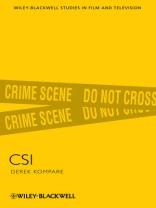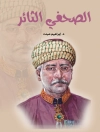There are certain films and shows that resonate with audiences
everywhere–they generate discussion and debate about
everything from gender, class, citizenship and race, to consumerism
and social identity. This new ‘teachable canon’ of film
and television introduces students to alternative classics that
range from silent film to CSI.
* Since its debut in September 2000, CSI’s fusion of
cinematic spectacle, forensic pathology and character drama has
regularly drawn in tens of millions of viewers around the
world
* This original new study investigates CSI’s
cultural importance, both for the media industry and for the
criminal justice system itself, exploring its formal and narrative
style, and its impact on media culture
* CSI provides a model for studying how genre, narrative,
industry concerns, and the broad ‘public life’ of a television
series contribute to our understanding of the nature and function
of contemporary popular television
İçerik tablosu
List of Figures.
Acknowledgments.
Introduction: Why CSI Matters.
1. Science, Spectacle, and Storytelling.
2. What Happens in CSI’s Vegas.
3. Finding Balance: Professionalism in Serial Narrative.
4. CSI Effects.
Conclusion.
Appendix: CSI Episode Guide, 2000-9.
Notes.
References.
Index.
Yazar hakkında
Derek Kompare is an Associate Professor in the Division of Cinema-Television in the Meadows School of the Arts at Southern Methodist University, where he teaches courses on media and culture. He has published articles on television history and form in several anthologies and journals, and his first book, Rerun Nation: How Repeats Invented American Television (2005), was runner-up for the 2006 Society for Cinema and Media Studies Katherine Singer Kovacs Book Award.












